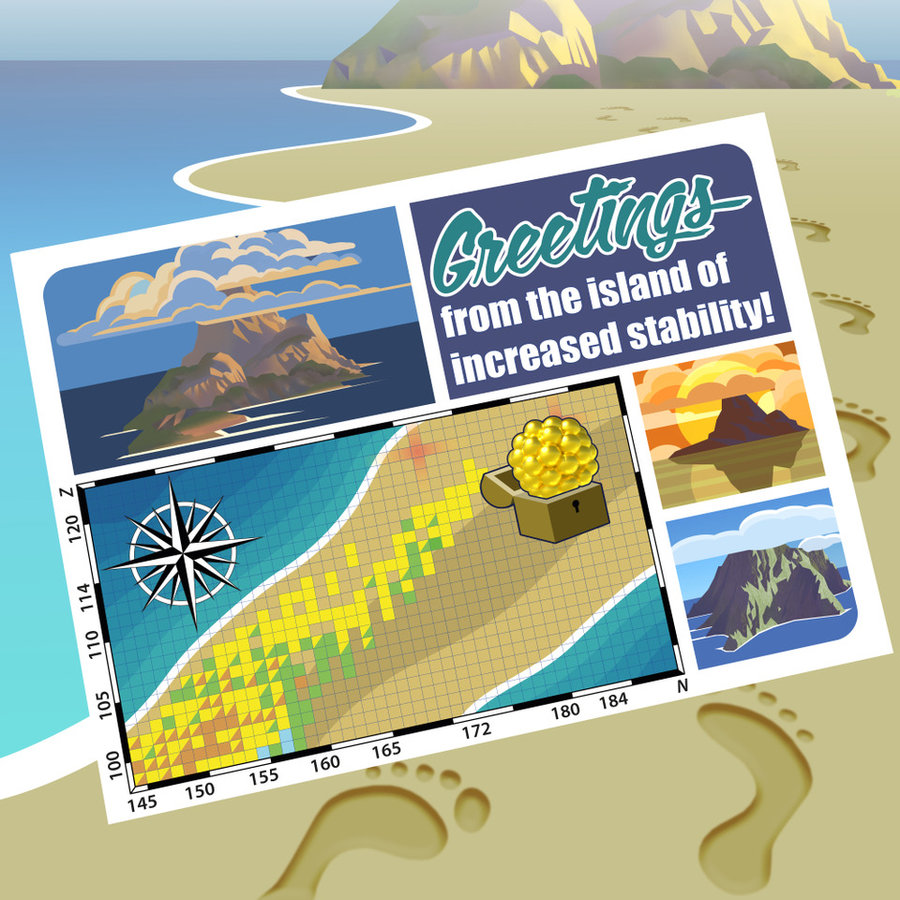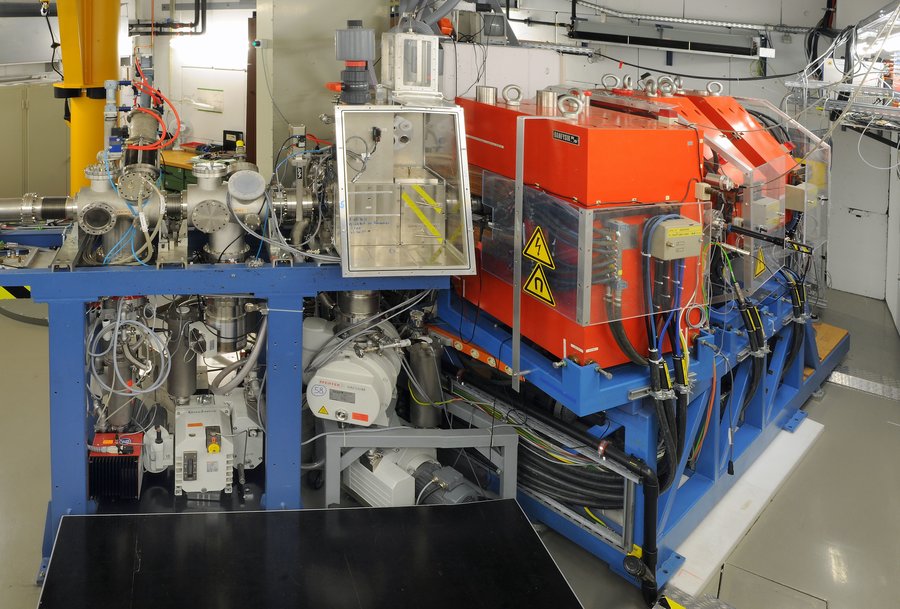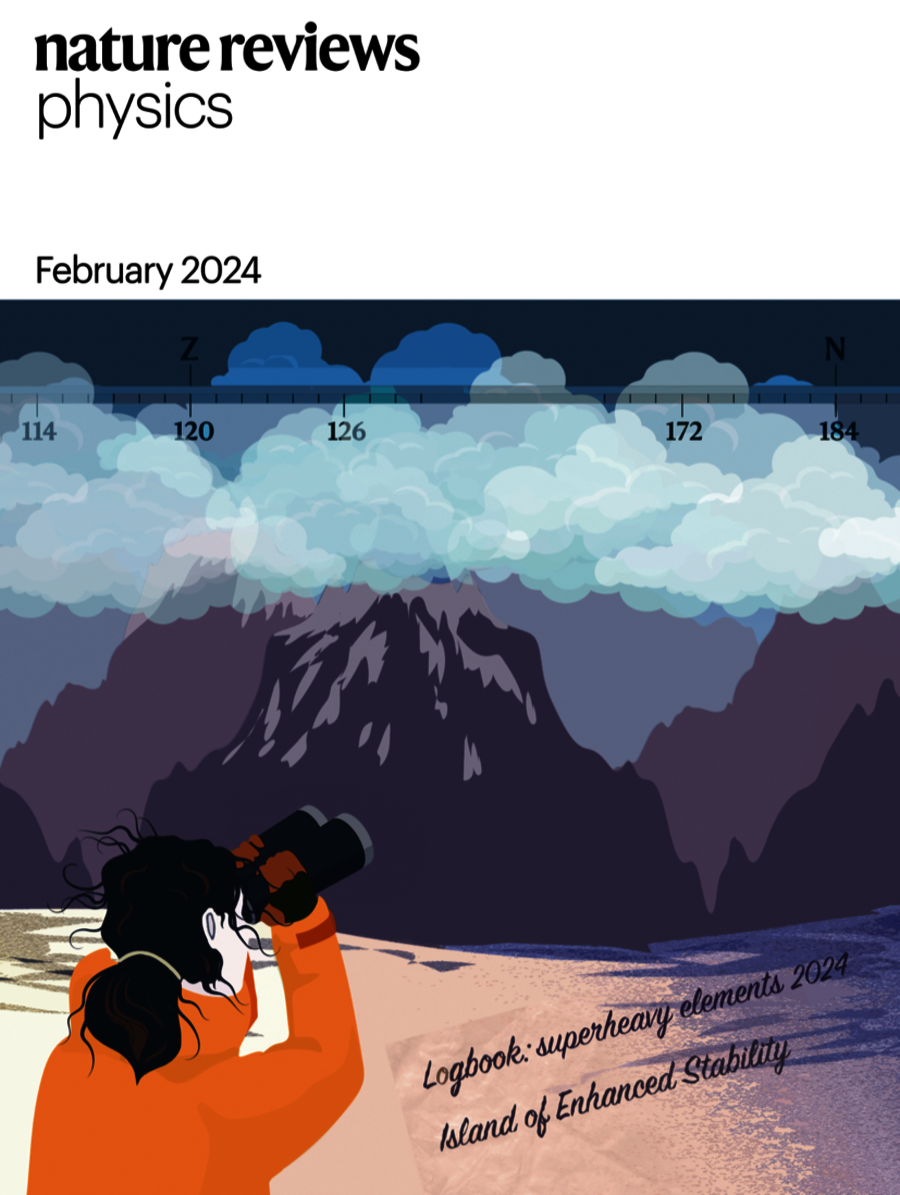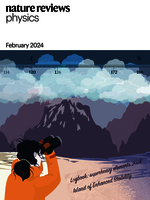Greetings from the island of enhanced stability: The quest for the limit of the periodic table
Review in Nature Reviews Physics discusses major challenges in the field of superheavy elements and their nuclei and provides an outlook on future developments
13.02.2024 |
Joint press release of the GSI Helmholtzzentrum für Schwerionenforschung, the Helmholtz Institute Mainz, and Johannes Gutenberg University Mainz
Since the turn of the century, six new chemical elements have been discovered and subsequently added to the periodic table of elements, the very icon of chemistry. These new elements have high atomic numbers up to 118 and are significantly heavier than uranium, the element with the highest atomic number (92) found in larger quantities on Earth. This raises questions such as how many more of these superheavy species are waiting to be discovered, where – if at all – is a fundamental limit in the creation of these elements, and what are the characteristics of the so-called island of enhanced stability. In a recent review, experts in theoretical and experimental chemistry and physics of the heaviest elements and their nuclei summarize the major challenges and offer a fresh view on new superheavy elements and the limit of the periodic table. One of them is Professor Christoph Düllmann from the GSI Helmholtzzentrum für Schwerionenforschung in Darmstadt, Johannes Gutenberg University Mainz, and the Helmholtz Institute Mainz (HIM). In its February issue, the world's leading high-impact journal Nature Reviews Physics presents the topic as its cover story.
Visualizing an island of stability of superheavy nuclei
Already in the first half of the last century, researchers realized that the mass of atomic nuclei is smaller than the total mass of their proton and neutron constituents. This difference in mass is responsible for the binding energy of the nuclei. Certain numbers of neutrons and protons lead to stronger binding and are referred to as “magic”. In fact, scientists observed early on that protons and neutrons move in individual shells that are similar to electronic shells, with nuclei of the metal lead being the heaviest with completely filled shells containing 82 protons and 126 neutrons – a doubly-magic nucleus. Early theoretical predictions suggested that the extra stability from the next “magic” numbers, far from nuclei known at that time, might lead to lifetimes comparable to the age of the Earth. This led to the notion of a so-called island of stability of superheavy nuclei separated from uranium and its neighbors by a sea of instability.
There are numerous graphical representations of the island of stability, depicting it as a distant island. Many decades have passed since this image emerged, so it is time to take a fresh look at the stability of superheavy nuclei and see where the journey to the limits of mass and charge might lead us. In their recent paper titled "The quest for superheavy elements and the limit of the periodic table", the authors describe the current state of knowledge and the most important challenges in the field of these superheavies. They also present key considerations for future development.
Elements up to oganesson (element 118) have been produced in experiments, named, and included in the periodic table of elements in accelerator facilities around the world, such as at GSI in Darmstadt and in future at FAIR, the international accelerator center being built at GSI. These new elements are highly unstable, with the heaviest ones disintegrating within seconds at most. A more detailed analysis reveals that their lifetimes increase towards the magic neutron number 184. In the case of copernicium (element 112), for example, which was discovered at GSI, the lifetime increases from less than a thousandth of a second to 30 seconds. However, the neutron number 184 is still a long way from being reached, so the 30 seconds are only one step on the way. Since the theoretical description is still prone to large uncertainties, there is no consensus on where the longest lifetimes will occur and how long they will be. However, there is a general agreement that truly stable superheavy nuclei are no longer to be expected.
Revising the map of superheavy elements
This leads to a revision of the superheavy landscape in two important ways. On the one hand, we have indeed arrived at the shores of the region of enhanced stability and have thus confirmed experimentally the concept of an island of enhanced stability. On the other hand, we do not yet know how large this region is – to stay with the picture. How long will the maximum lifetimes be, with the height of the mountains on the island typically representing the stability, and where will the longest lifetimes occur? The Nature Reviews Physics paper discusses various aspects of relevant nuclear and electronic structure theory, including the synthesis and detection of superheavy nuclei and atoms in the laboratory or in astrophysical events, their structure and stability, and the location of the current and anticipated superheavy elements in the periodic table.
The detailed investigation of the superheavy elements remains an important pillar of the research program at GSI Darmstadt, supported by infrastructure and expertise at HIM and Johannes Gutenberg University Mainz, forming a unique setting for such studies. Over the past decade, several breakthrough results were obtained, including detailed studies of their production, which led to the confirmation of element 117 and the discovery of the comparatively long-lived isotope lawrencium-266, of their nuclear structure by a variety of experimental techniques, of the structure of their atomic shells as well as their chemical properties, where flerovium (element 114) represents the heaviest element for which chemical data exist. Calculations on production in the cosmos, especially during the merging of two neutron stars, as observed experimentally for the first time in 2017, round off the research portfolio. In the future, the investigation of superheavy elements could be even more efficient thanks to the new linear accelerator HELIAC, for which the first module was recently assembled at HIM and then successfully tested in Darmstadt, so that further, even more exotic and therefore presumably longer-lived nuclei will also be experimentally achievable. An overview of the element discoveries and first chemical studies at GSI can be found in the article “Five decades of GSI superheavy element discoveries and chemical investigation,” published in May 2022. (BP/JGU)
Further information
- Scientific publication „The quest for superheavy elements and the limit of the periodic table“ in the journal Nature Reviews Physics
- Overview of element discoveries and first chemical studies of some elements found at GSI in Radiochimica Acta
- Press release of JGU: International team of researchers observes new superheavy element 117
- Press release of JGU: Change of course on the journey to the island of stability
- Press release on study of chemical properties of flerovium
- Press release on kilonovae
- News release regarding the planned HELIAC accelerator


















